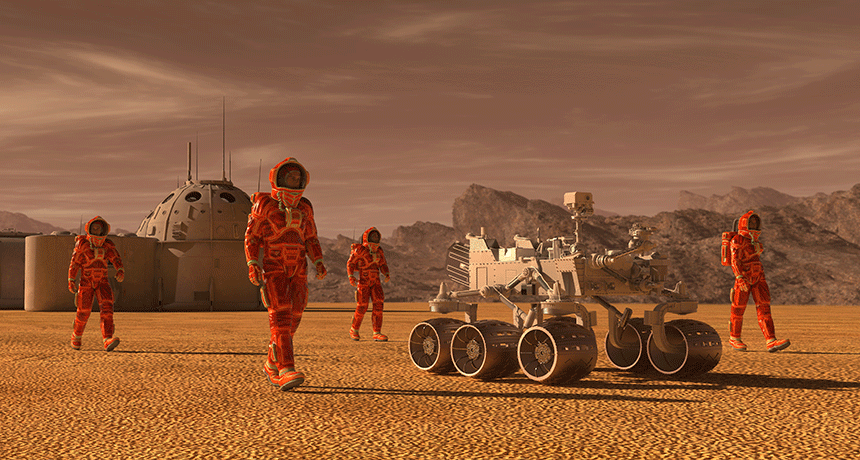Scientists have been dreaming of going to Mars for decades. Now, with the advances in technology, it is becoming a reality. In this blog, we will explore how scientists will go to Mars and what they will do once they get there.
Spacecraft
The first step in going to Mars is to build a spacecraft that can make the journey. This spacecraft must be able to withstand the extreme temperatures and radiation of space, as well as the long journey. It must also be able to carry enough supplies for the astronauts to survive the trip.
The spacecraft must also be able to land on the surface of Mars. This is a difficult task, as the atmosphere of Mars is much thinner than Earth's. To make this possible, the spacecraft must be equipped with a heat shield and a parachute.
Propulsion
The spacecraft must also be equipped with a propulsion system that can get it to Mars. This could be a chemical rocket, a nuclear rocket, or an ion engine. Each of these propulsion systems has its own advantages and disadvantages.
The chemical rocket is the most common type of propulsion system used for space travel. It is relatively inexpensive and can get a spacecraft to Mars in a relatively short amount of time. However, it is not very efficient and produces a lot of pollution.
The nuclear rocket is much more efficient than the chemical rocket, but it is also much more expensive. It is also much more dangerous, as it uses nuclear fuel.
The ion engine is the most efficient type of propulsion system, but it is also the most expensive. It uses electricity to accelerate ions, which then push the spacecraft forward.
Living on Mars
Once the spacecraft has arrived at Mars, the astronauts must be able to survive on the planet. This means they must be able to find food, water, and shelter. They must also be able to protect themselves from the harsh environment of Mars.
To do this, the astronauts must be able to build a habitat on the surface of Mars. This habitat must be able to protect them from the extreme temperatures and radiation of space. It must also be able to provide them with food, water, and shelter.
Conclusion
Going to Mars is a difficult and dangerous task, but it is also an exciting one. With the advances in technology, it is becoming more and more possible. In this blog, we have explored how scientists will go to Mars and what they will do once they get there. With the right technology and preparation, it is only a matter of time before humans set foot on the Red Planet.

